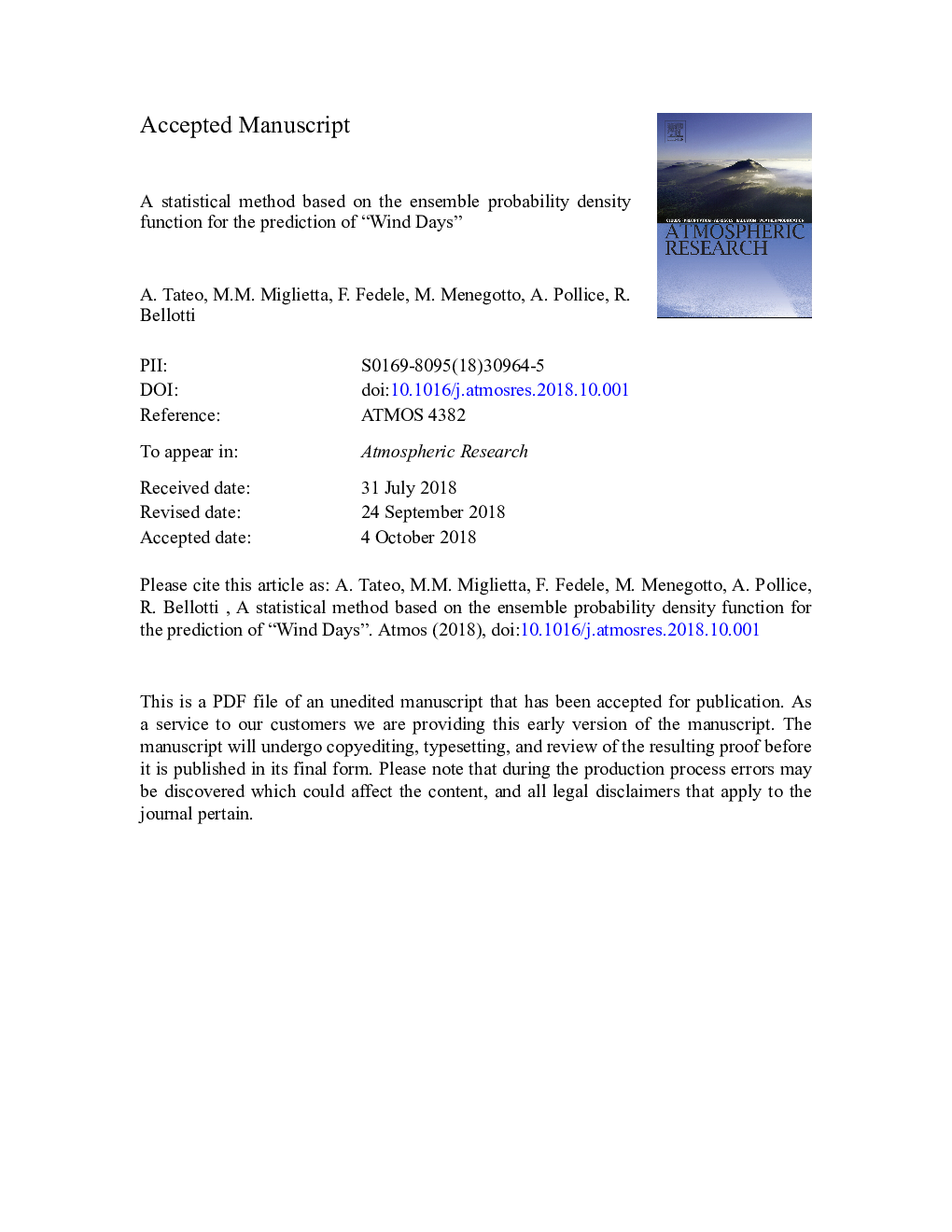| Article ID | Journal | Published Year | Pages | File Type |
|---|---|---|---|---|
| 11025055 | Atmospheric Research | 2019 | 20 Pages |
Abstract
To reduce the systematic error, we test different thresholds and numbers of consecutive hours when the definition of WD is applied to model outputs. All the models show remarkably better performances after these parameters are changed. In particular, our method shows the best performance, with an accuracy of 94%. The analysis on test (leave-one-out strategy in 2016) and validation datasets (66 cases in 2017) confirms the previous outcomes. We test our procedures considering the forecast time intervals of 49-72 and 25-48â¯h, where similar performances are found. In conclusion, our analysis show that the proposed method presents better performances compared to the traditional approaches for different statistical performance indicators.
Keywords
Related Topics
Physical Sciences and Engineering
Earth and Planetary Sciences
Atmospheric Science
Authors
A. Tateo, M.M. Miglietta, F. Fedele, M. Menegotto, A. Pollice, R. Bellotti,
